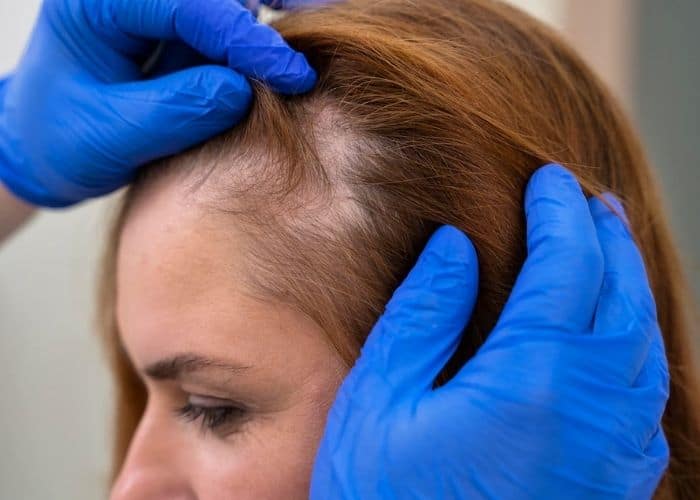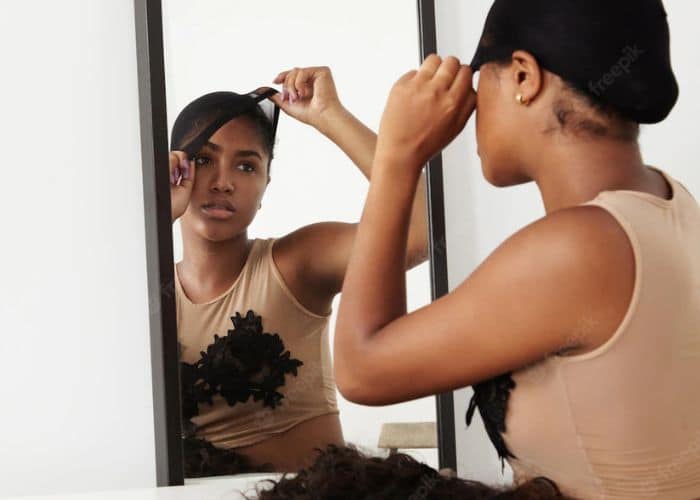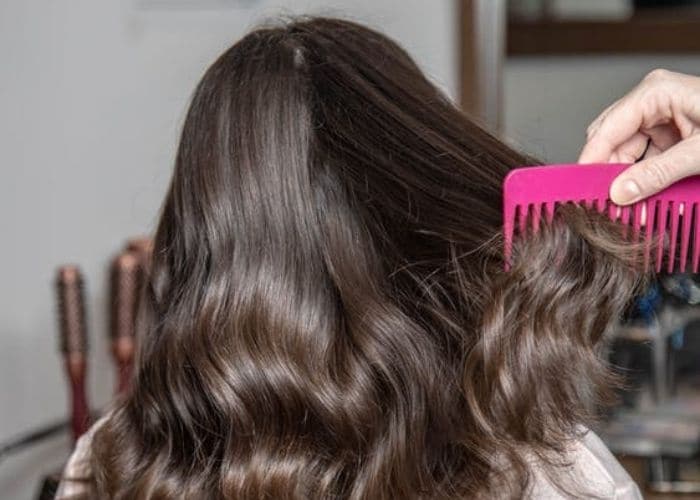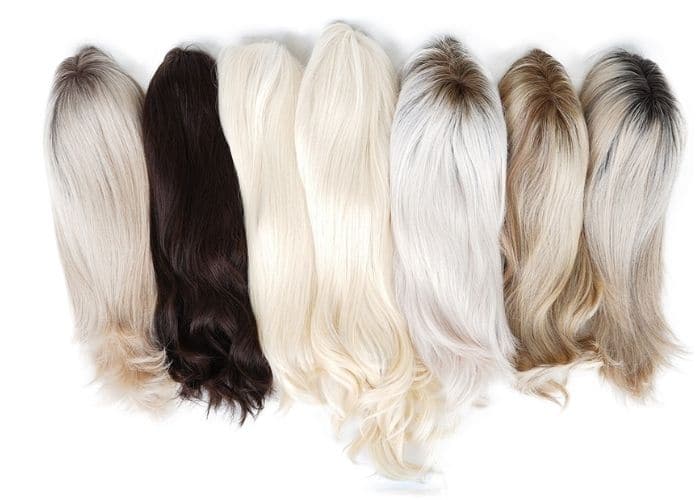“Can wearing wigs cause hair loss?” Some first-time wig wearers, especially those who have already been experiencing hair loss, will ask this question before buying their first wig.
We can truly understand their worries. People choose to wear a wig for feeling and looking better. No one expects wearing wigs to harm their natural hair or make their hair loss even worse.
Put simply, wearing a wig does not cause hair loss. On the contrary, wearing wigs can protect the wearers’ scalp and hair underneath the wig from dirt, UV rays, etc., and promote better hair and scalp health. Hair wigs are a great means for covering and protecting the wearers’ natural hair, especially when it’s fine or thin.

However, wearing certain types of wigs, and wearing or taking off wigs improperly can sometimes develop a type of hair loss called traction alopecia, which is caused by excessive and constant pulling or pressure on the hair follicle.
You don’t have to worry too much about traction alopecia as it doesn’t happen to everyone. And you can absolutely avoid it by choosing and wearing the wig in the right mean.
Following the important tips below can help reduce your risk of developing traction alopecia from wearing wigs. Now let’s directly dive in!
Choose the Right Wig Size
Using wigs that are too tight or too small is a widespread cause of traction alopecia. Many wig wearers prefer smaller sizes because they want a strong hold that ensures their wigs stay in place and do not easily move around.
However, wearing a very tight wig puts more pressure and friction on the hair roots, thus causing the hair to fall off or break over time. So, it is vital for the wearers to get the right size of wig in order to make sure the wig stays in place and firmly secured while preventing it from causing hair loss.
Check our instructions on how to measure the size for a full cap wig or watch the video below.
Using a Wig Cap
Before wearing a wig, we usually suggest the wearers have their hair braided and wear a wig cap to protect the hair from friction. If you do not follow these steps, the hair is more prone to damage from the wig base.

Most wig wearers do not enjoy the process of putting on a wig — finding it quite a hassle. They often skip some steps to save time and effort. Skipping steps might seem trivial and insignificant but they can actually make a huge difference in whether you will experience hair loss due to wearing a wig.
Pressure from the wig on the scalp can damage the hair roots and gradually loosen the roots before the hair falling even starts happening.
Don’t Put Your Wig on Wet Hair
Wet hair underneath a wig is a breeding ground for bacteria and wet hair is also more fragile and prone to breakage and shedding. Thus, always let your hair dry naturally or use a blow dryer if you’re in a hurry before putting on your wig.

Using the Right Way to Comb Hair
Many wigs are designed with the hair mixed with the wearers’ hair to achieve a more natural-looking appearance, such as hair integrations and hair toppers.
These kinds of wigs are meant to add more volume to the wearers’ existing hair to improve the appearance while still looking natural and being easy to use.
After putting on such wigs, the wearers usually need to use a comb to have all the hair evenly and naturally mixed.
Instead of using a regular comb to comb the hair, try a wide-toothed one.
When detangling the hair, many people like to pull on the hair while combing it through, leading to hair falling.
What they need to do first is use a wide-toothed comb to untangle the hair before using a brush to neaten and straighten the hair. Gently brush to untangle the starting from the tips, then the middle part, and move up to the roots.

Use Tape and Water-Based Glue
Some wigs need the help of tape or glue to be fixed onto the wearer’s head.
Choose tape or water-based glue(eg. Ghost Bond Adhesive ) instead of solvent-based glue(eg. Walker Tape Ultra Hold ), which contains fewer chemicals and thus won’t s irritate the wearers’ sensitive skin or harm the hair follicles.
Using a glue-less wig that does not require adhesive to be installed is also a good choice.
Choose a Comfortable Wig Made of Human Hair
Bad wigs are made coarse and rough. When put on the head, the base can cause very intense friction against the wearers’ own hair and therefore, lead the hair underneath to shed as time goes by.
Choose a highly comfortable human hair wig that is soft and lightweight, like medical wigs. They won’t cause any form of discomfort, itchiness, and pain to the wearer’s scalp.

Summary
Wearing wigs doesn’t mean that you are developing or will develop traction alopecia. You can absolutely avoid traction alopecia by choosing the right kind of wig and treating your hair the right way.
At New Times Hair, all our wigs are top-class products that are not only made from the most superior base and hair materials but are handcrafted by the most specialized and experienced workers.
Besides, none of our wigs have been reported to have caused hair loss by the wearers. In the case that you or your customers have experienced more severe hair loss after wearing a wig, whether manufactured by other hair wig manufacturers or by us, please feel free to reach out to us to examine the problem as we would be glad to help you out given our expertise in this field!